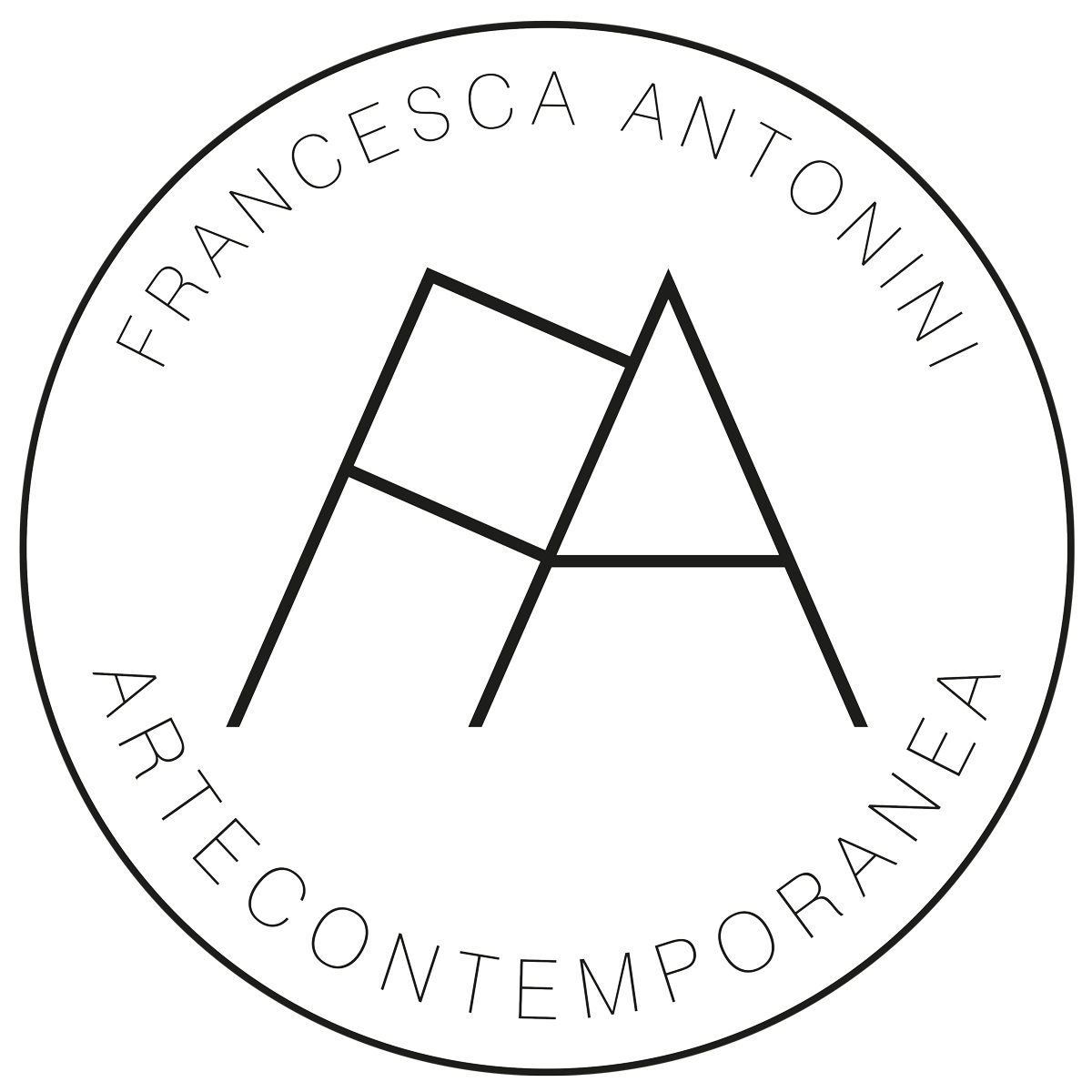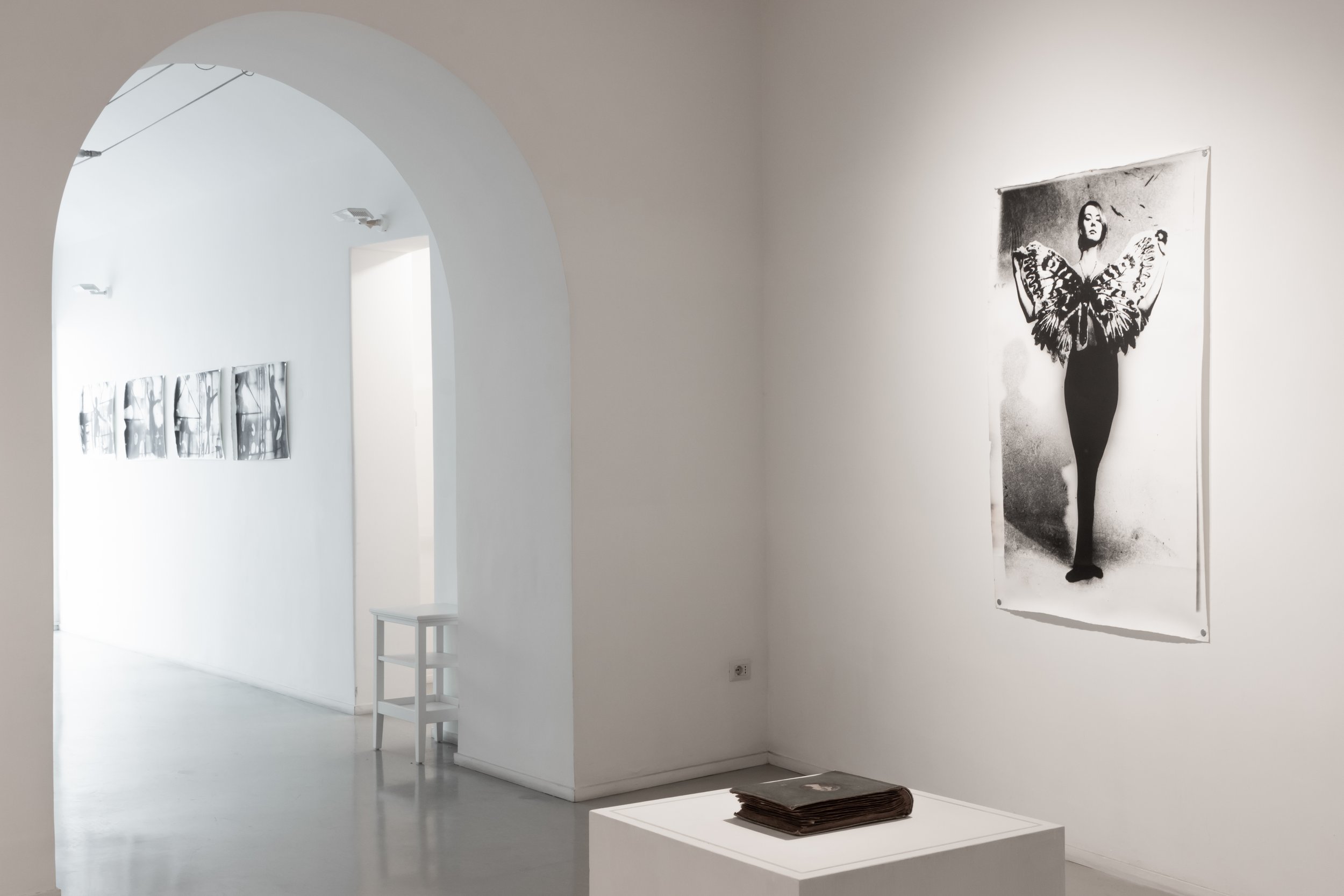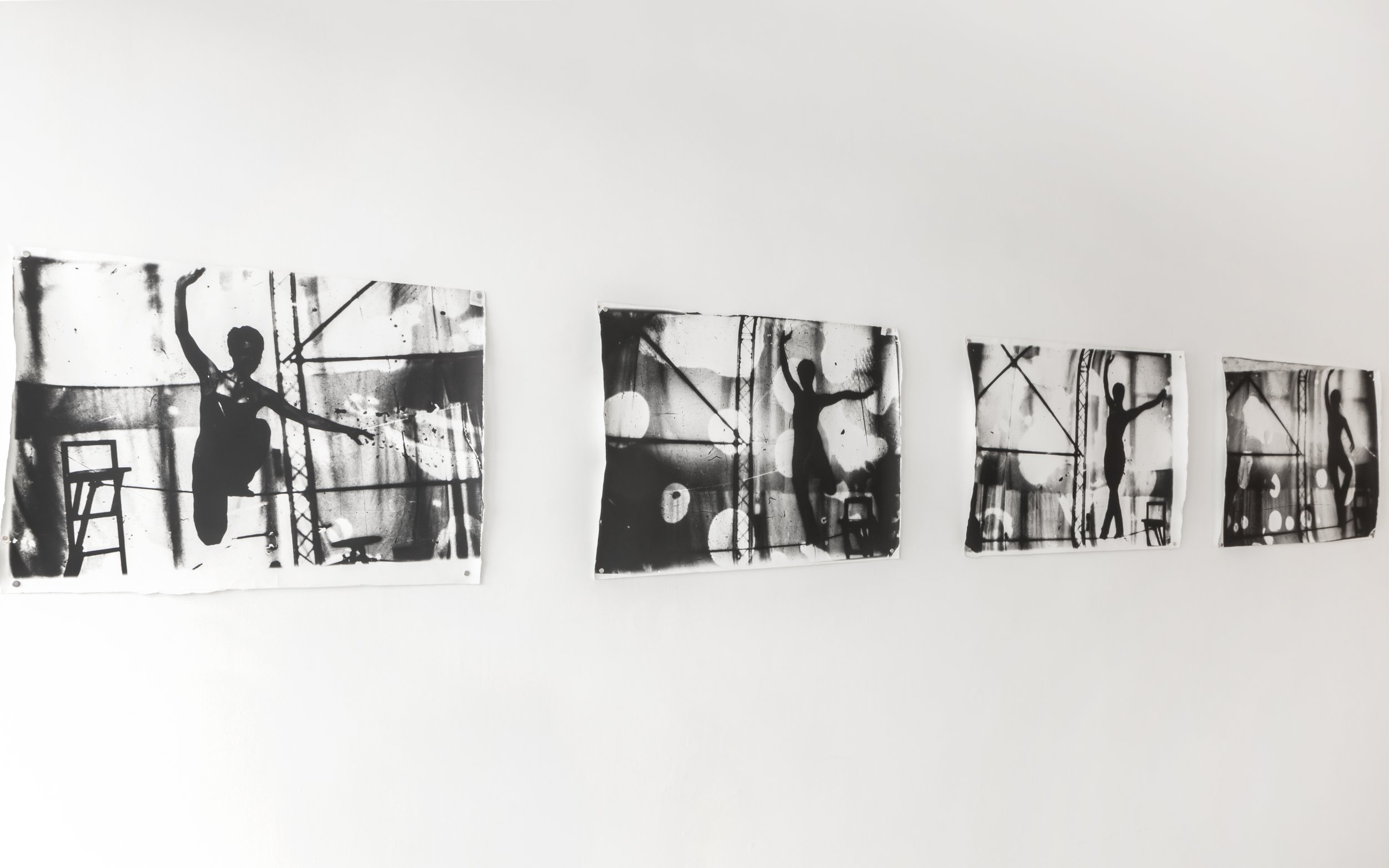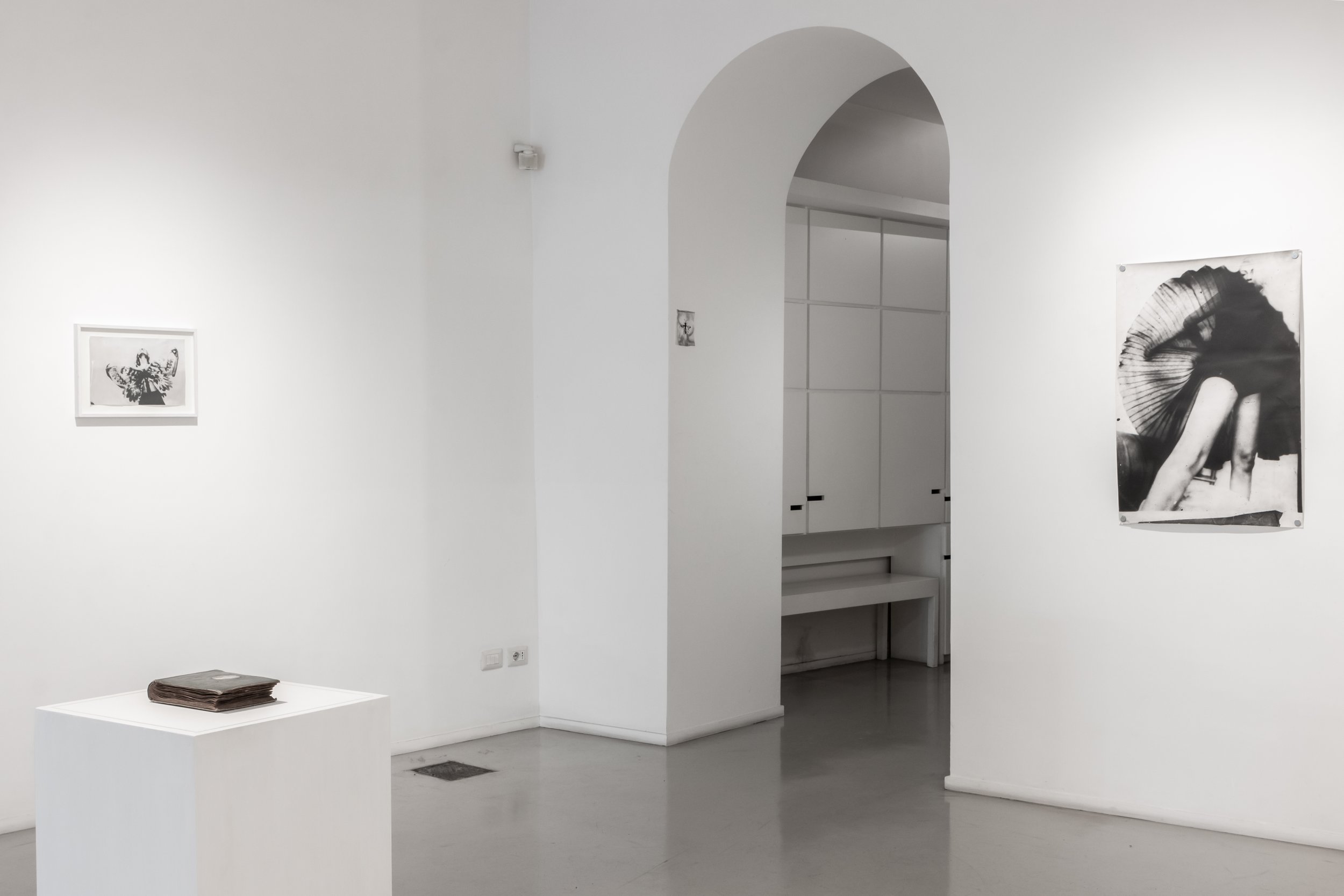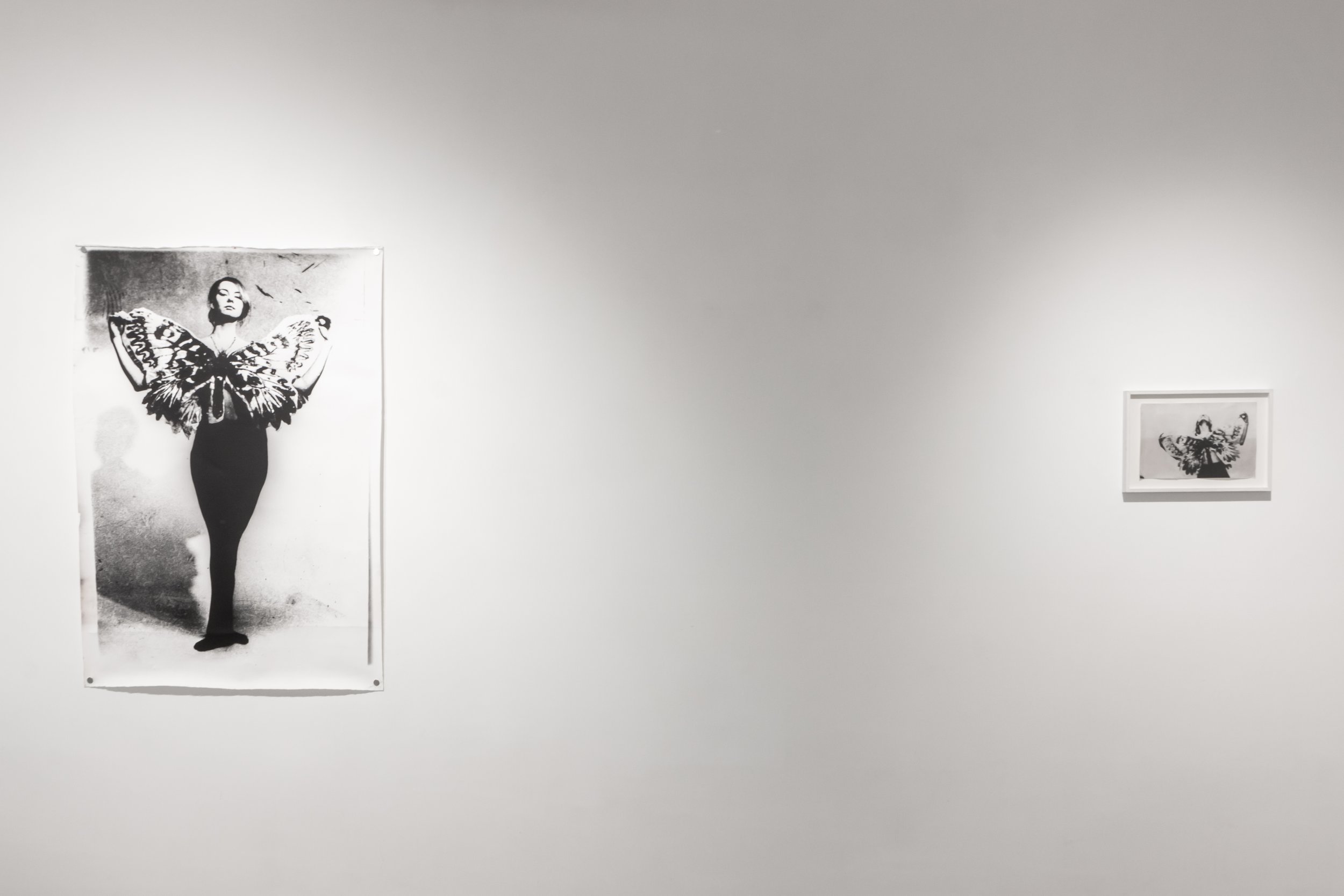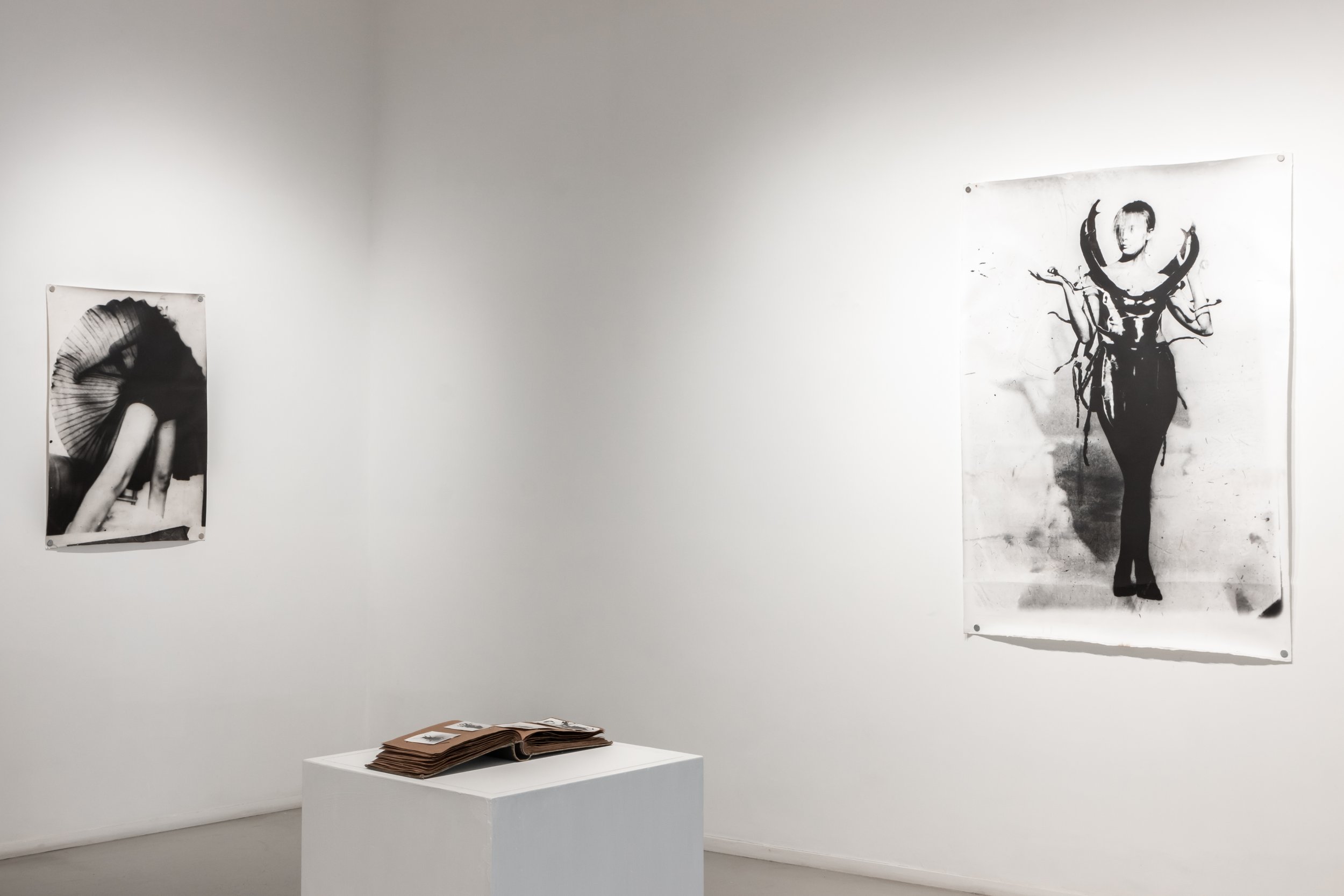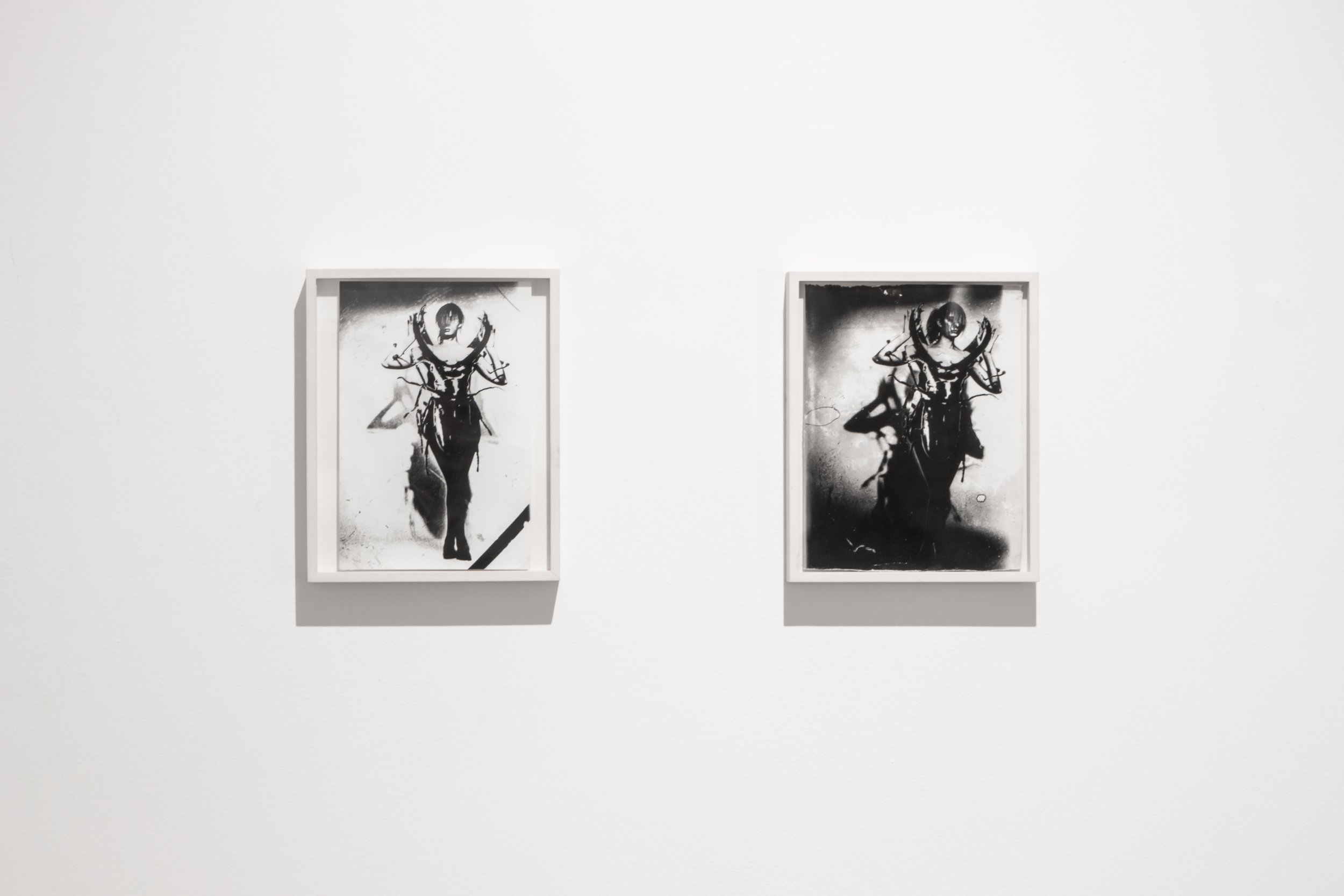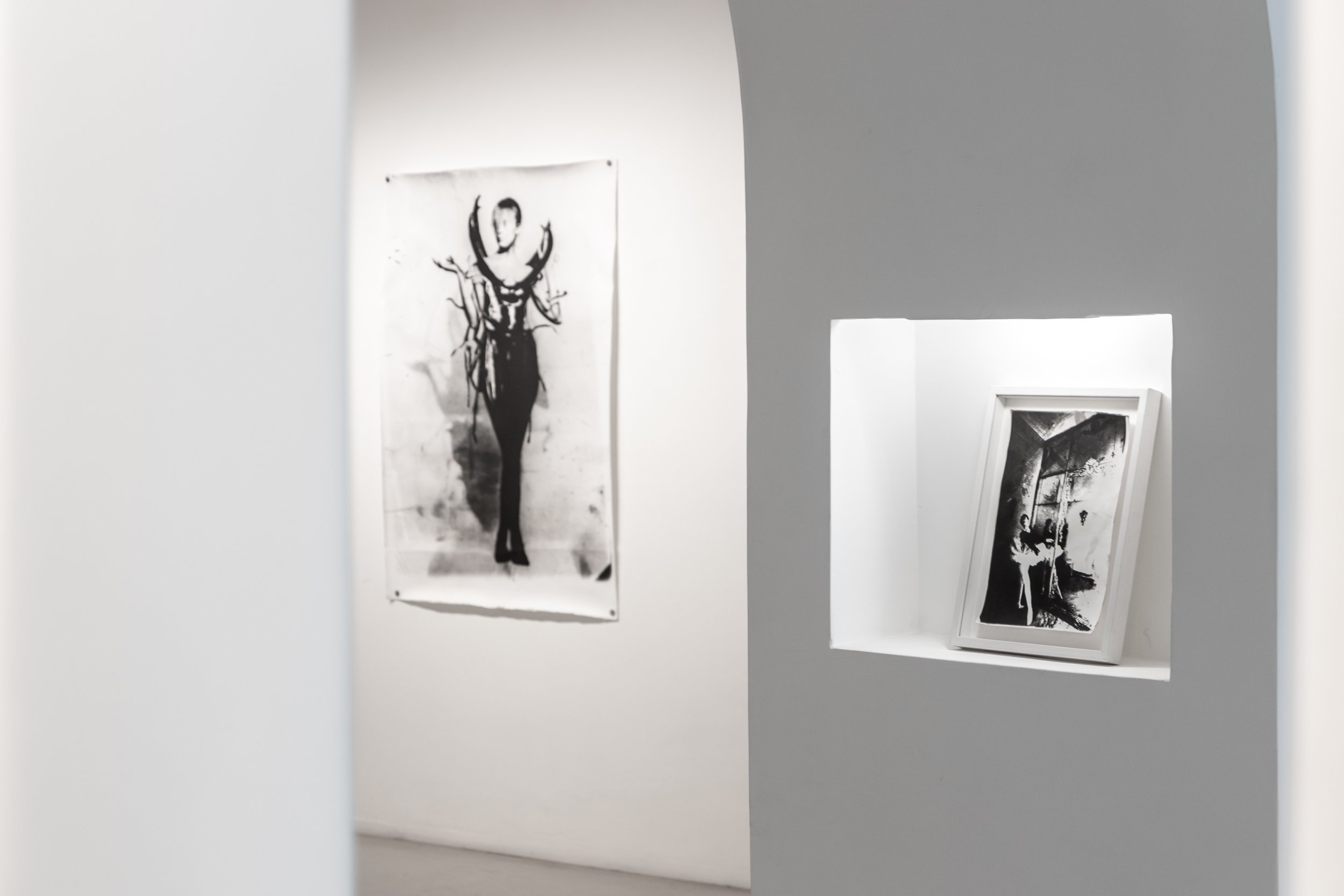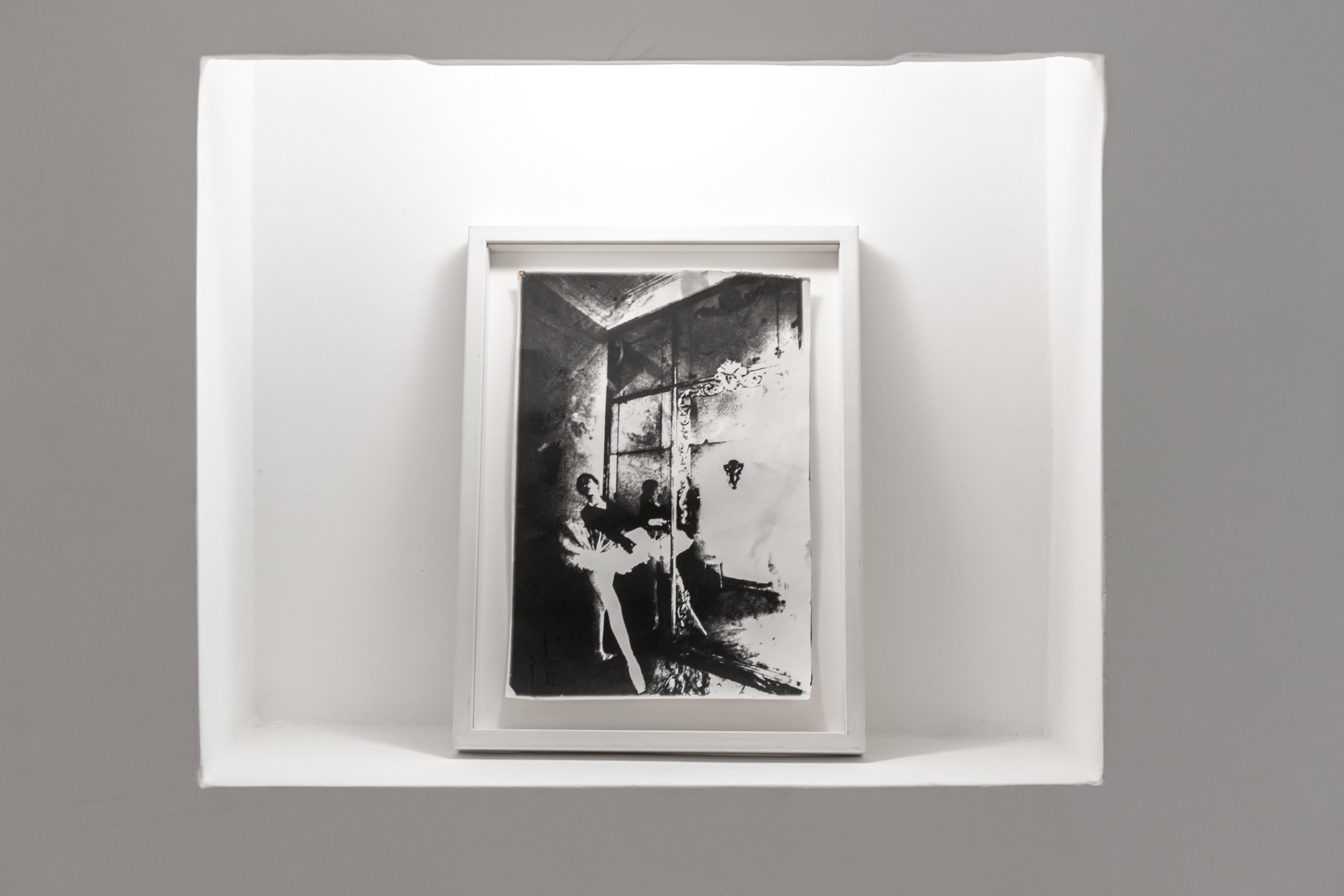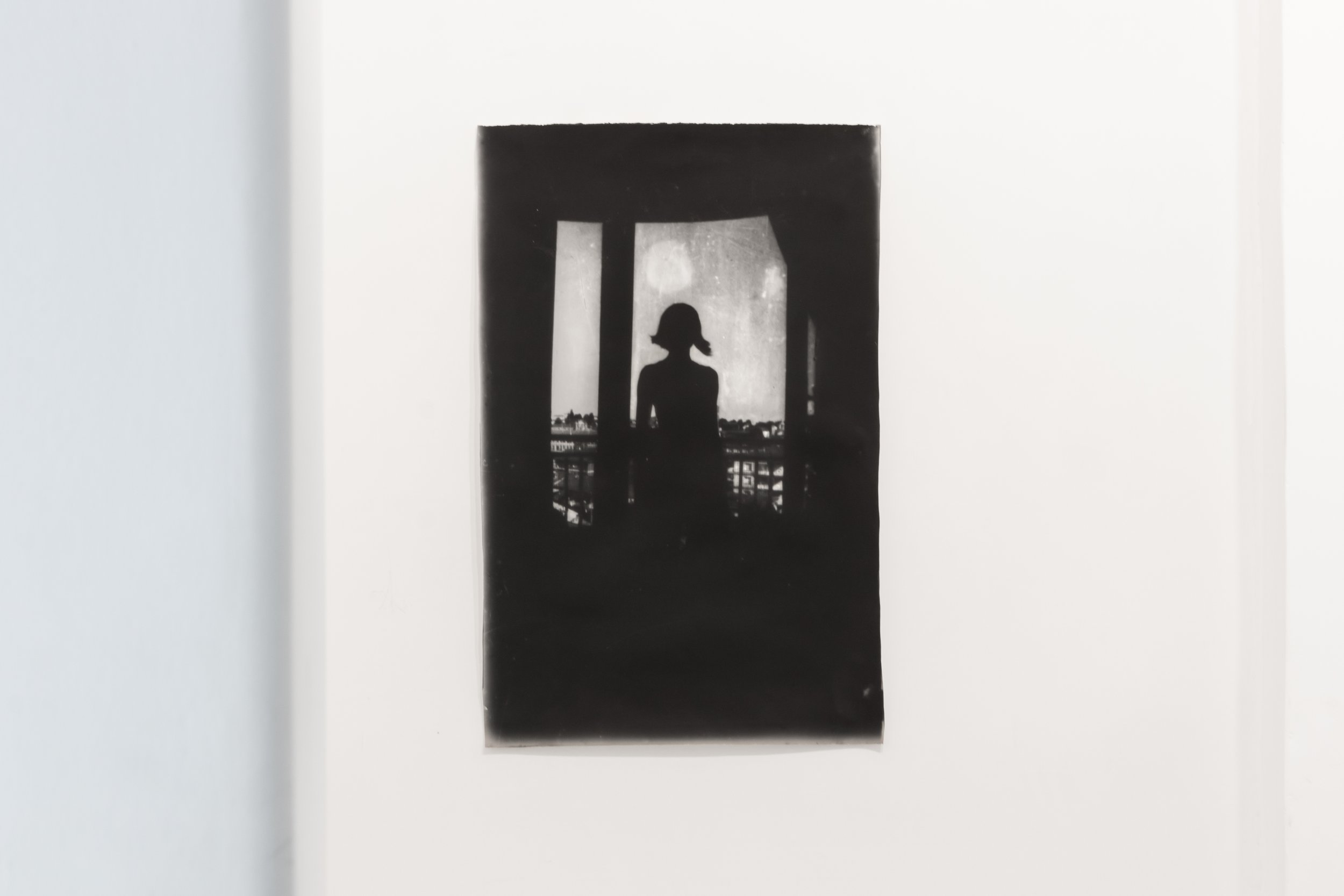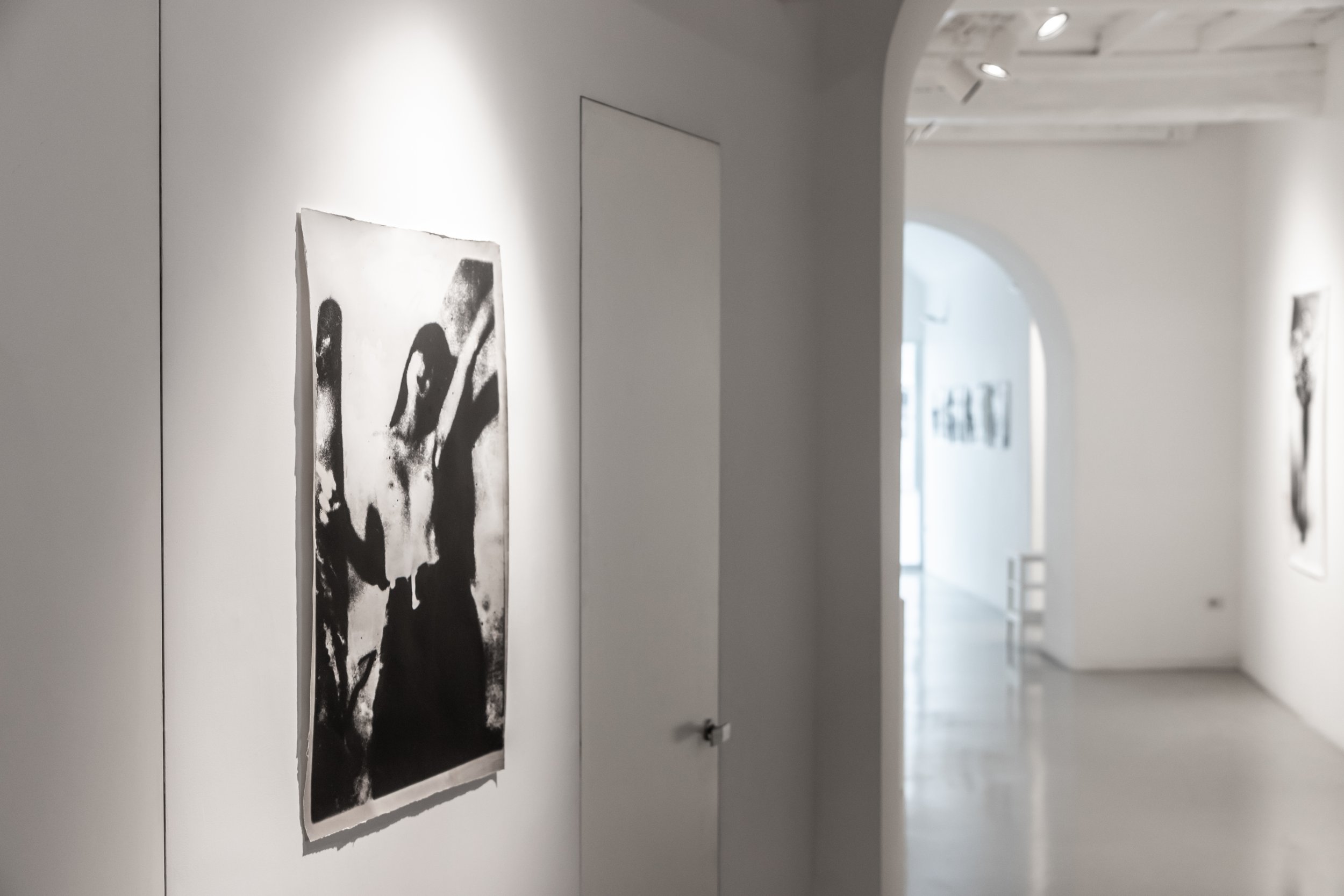LA SCELTA DEL TEMPO
MONICA CAROCCI
OPENING THURSDAY march 14TH 2024
UNTIL SATURDAY MAy 18TH 2024
LA SCELTA DEL TEMPO
“To live, just as to swim, goes better who is unburdened, because even in the storm of human life light things serve to support, heavy things to sink” Apuleius
PAOLA UGOLINI
I will explain how they exist, in everything pertaining to it, what I call the images or simulacra of bodies, that here, that there go flying, almost membranes detached from their outer envelope, by the air (...). Therefore I say that the bodies, from their outer envelope, emit subtle figures and simulacra which almost must be said to be a bark or membranes of them. Titus Lucretius Carus, De rerum natura
Lucrezio, De rerum naturae: “Origini dei simulacri”
«For Lucretius the image is a thing. It is configured as a fabric, manifested as matter flying through air. Thus, as the Epicurean philosopher and poet suggests, something important to come to light: the physical substance of an imagine manifests itself on the surface»1.
Since the beginning of her career, Monica Carocci has distinguished herself for a very personal use of the photographic medium, managing to create a rarefied, suspended and mysterious atmosphere floating around each of her subjects. The surface of her photographs appears as the one on which the image manifests itself, but remains suspended between 'matter flying through the air' and 'physical substance.'
In the 1980s in the world of photography there was a search for an overlap between reality and fiction, a very important fact for the recognition of a new cultural vision, which was clearly affirmed in the following decade, where the distinction between reality and virtuality tends to be entirely annulled. The boundary between these two levels becomes increasingly labile and floating, and the image is freed from the burden of being the bearer of universal truth.
Landscapes, animals and female figures are the subjects that this visionary artist prefers and that, through an elaborate technique of manual manipulation, are projected beyond the horizons of reality, constituting themselves in imaginaries and visions out of time, and not conforming to anything that can be seen with the eye of reason. His landscapes, liminal environments poised between the urban and the rural, between the technological and the natural, are not immortalized in a perpetual and unchanging staticity. On the contrary, they are 'crossed' in an unstable way because they are the projection of a gaze that, overcoming the conventions of a certain communicative spectacularity, transforms them into metaphors of becoming, of the changeable and the uncertain.
For Monica Carocci 'the means determines the end' in fact, photography is for her not just a simple tool of technical and formal perfection, but the way by which she arrives at the ultimate image, the result of a series of successive interventions practiced on her skin, on her cortex: abrasions, additions, erasures, chromatic variations that she then photographs a second time and prints exclusively in black and white.
This meta-photography thus does not believe in objective reality but seeks to capture with its ineffability the indefinite space of the unconscious and surreal. These are dematerialized and blurred images that, preventing an univocal reading of reality, become mirrors of subjective consciousness.
Dancers, ethereal female figures in precarious balance, animals, insects, streets, metropolitan skylines, flowers are all elements that the artist uses as symbols of a suspended dimension, always on the verge of vaporizing into something else, as if they were epiphanies. They are experiences, emotions, sensations and memories, images more like visions than phenomena of the daytime world. Flashes in whose glow ambiguous suggestions appear. Black and white, darkness and light, are not just opposing chromatic or phenomenal variations, but osmotic and intimate conditions that directly come into contact with the viewer's inner gaze rather than the retinal one.
Monica Carocci with this new work, which she presents for the first time in Francesca Antonini's gallery, makes visible the fears that are hidden in the folds of our uncertain times torned apart by wars, climate crisis and migration flows. The figure of the ballerina, an iconic image to represent a femininity that is only apparently delicate, has evolved into a series of fascinating and disturbing female figures hybridized with elements taken from the world of insects, armored maidens, to face the adversities of the contemporary world. Too often we forget that in order to be able to balance on one's toes or to pirouette elegantly it is required an enormous amount of strength and hard daily training. Dancers are athletes who can soar gracefully, making those who admire them forget the power of their muscle bundles and the fatigue of the performance. This is the magic of dance, turning strength into grace. There is also magic in these contemporary goddesses who emerge on the surface of the photographic print between tears and lacerations like warriors from distant planets. As Rosi Braidotti has theorized, "between the organic and the inorganic we find insects, body-realities capable of ferrying us out of anthropocentrism and guiding us along the directions of posthuman logic and praxis»2.
These new cyborg warriors represent with their hybrid bodies a process of fusion of irreconcilable terms such as human/machine and biology/technology; to refine their combat practices they have incorporated into the organicity of the human body the insectoid and arachnoid morphology of dryness, hairlessness, unbreakable body armor similar to metal, great resilience, mimetic ability and lightness. «The cyborg warrior moves nomadically, not interested in embodying a myth or narrative that does not start from her thinking polymateric flesh»3.
In this tale of femininity and strength, it would be interesting to find out what would happen in an inverted world in which it is the female body that is feared. A possibility that nature has already foreseen for example in the mantis and the black widow, which have an inverted gender dysmorphism, being the females larger and more aggressive than the male. Their reproductive mode, moreover, represents the concretization of the darkest fears related to virile sexuality: during mating, the female decapitates the male and then eats his body.
«Post-anthropocentrism displaces the notion of species hierarchy and of a single, common standard for 'Man' as the measure of all things. In the ontological gap thus opened other species come galopping in»4. The insect-women created by Monica Carocci fit well into the contemporary ideological landscape in which the philosopher Rosi Braidotti has added the word feminism to the concept of post-humanism to «implement a transformative process of exploration of alternative paths of thinking and becoming»5. Carocci's feminine essence is embodied in bodies that transcend the sci-fi idea of the cyborg warrior theorized by Donna Haraway for whom the hybridation process involved human and machine, flesh and steel, individual bodies that become collective bodies to suggest new war configurations. The cyborg body thus became a nomadic subject that deliberately confuses the categorical distinctions of human/machine, nature/culture, man/woman and precisely because it trespasses, it is not unitary but represents a multi-layered and contradictory subjectivity. On similar premises, Monica Carocci's hybridized women are instead meta-human or perhaps ultra-human, since they incorporate into their own form, improving it in terms of resistance and strength, organic elements of other species inhabiting our planet. So, bodies empowered to resist and fight, remaining in the bed of a nature that is at the same time already technology.
That first blurry vision of the world of sensitive data now becomes a pre-vision. Fictionality is already inherent in reality, and it is the capacity to fabulate and utopize, in the sense of creating the future. From the underground and the interstices, all that is repressed now emerges, increasingly tangible, against the certainties of biology and eugenics as the foundation of the anthropocentric world structure.
1 G. Bruno, Superfici, a proposito di estetica, materialità e media, Johan&Levi editore, 2016 Cremona, p. 9. 2 R. Braidotti in A. Chiricosta, Un altro genere di forza, iacobellieditore di Trefusi srl, 2019, p.316. 3 Chricosta, op.cit., p.317. 4 R. Braidotti, Il Postumano (Vol.3.), Femminismo, Derive e Approdi, 2023. 5 Ibidem
